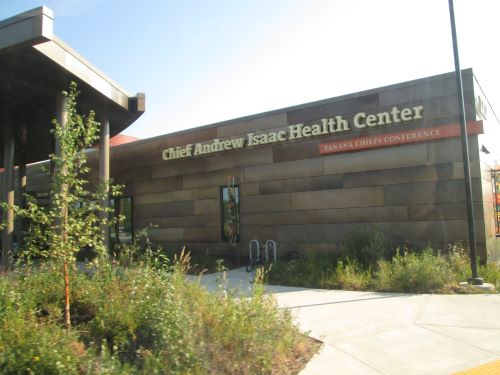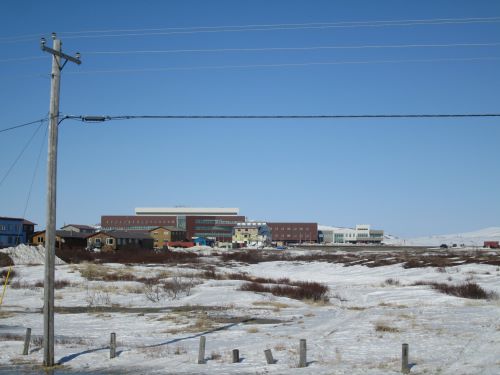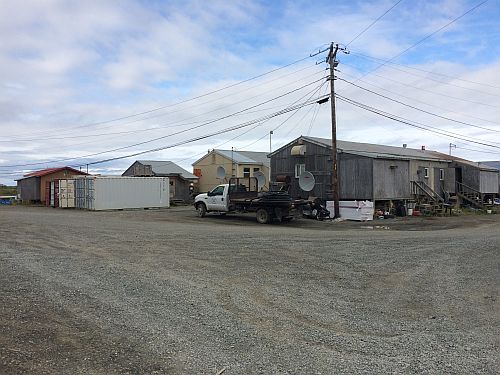
Lighthouse on the Coast of British Columbia
In the previous post, I mentioned that the study of Native California solstice observation that I was discussing found that southern California groups had types of observation resembling those in the Southwest, while northern California groups had observation types more like those of the Northwest Coast. This makes sense in terms of the larger cultural patterns tying these California groups to these other regions in general. However, when I started thinking more about this particular pattern I realized that there was something odd, or at least unfamiliar, about it.
The Southwest is of course very well known for its Native astronomy, both ancient and modern. The same is not true of the Northwest, however. This region is ethnographically very well-studied, and is well known for its cross-culturally unusual pattern of complex hunter-gatherer societies with a variety of elaborate social institutions. Astronomical observations, however, are not among the institutions widely associated with the Northwest. In contrast to the wide-open skies, sunny weather, and distant, varied horizons of the Southwest, the Northwest is a humid, rainy area of dense forests and mountains that come all the way to the sea. This would be a hard place to observe the sun! What’s more, astronomy and calendars are often associated with agriculture and the need to keep track of seasons for planting and harvesting, but the Northwest tribes had no agriculture and instead relied on hunting, gathering, and especially fishing for their subsistence. Did they really observe the sun and keep track of the solstices?
To try to answer this question, I followed the references from the California paper and found that those relating to the Northwest pretty much all came back to one publication, a monograph by Leona Cope published in 1919 entitled Calendars of the Indians North of Mexico. This is a systematic survey of the ethnographic information available at that time about the calendrical systems in this large region. To my knowledge there has never since been a similarly comprehensive study with updated information, which is unfortunate as the data available 100 years ago for many tribes and areas was quite sketchy and incomplete.
Be that as it may, Cope did quite well with the information she had available. She divided the types of calendars into three categories, based on the origin of the names of the months or “moons”:
- Descriptive Type, by far the most common and found throughout the continent. The months are named descriptively, often after natural seasonal phenomena but sometimes after cultural phenomena such as ceremonies.
- Numerical Type, the rarest and most restricted in distribution, running discontinuously along the Pacific coast from southern Alaska to northern California. Some or all of the months are numbered rather than named, though very few calendars use numbers exclusively.
- Astronomical type, the one of most interest for my purposes here. The calendar, while based on lunar months like the other types, is calibrated in some way to one or both of the solstices. Found in three regional clusters: the Southwest (plus southern California), the southern Northwest Coast, and the central and eastern Inuit groups in Arctic Canada and Greenland.
This is a very interesting distribution of solstice observations! Cope attributes the Inuit observation practices to the unusual seasonal conditions of the far north, which is fair enough though it should be noted that not all of the Arctic or Subarctic groups in her study have astronomical calendars. She notes that the Inuit track the sun by indirect observation of shadows cast by rocks, in contrast to the direct observation of the sun used in the Northwest and Southwest (though recent archaeoastronomical work in the Southwest strongly suggests that at least some indirect observation was done there in the past as well).
Cope also has some information on the function of solstice observation among some of the Northwest tribes. She says of the Nuu-chah-nulth of Vancouver Island:
The observation of the solstice is of great economic importance. If one
wishes to be successful in the hunting season, he must perform certain magical rites when the days are getting longer and the moon is waxing.
Again, very interesting! This is quite different from the ideology surrounding sun-watching among Southwest agriculturalists, but it has a clear logic to it that would provide an incentive to undertake the difficult task of making these observations in the Northwest.
Also noteworthy is the distribution of solstice observations within the Northwest. Many of the more “complex” features of Northwest Coast societies are generally considered to reach their highest level of complexity at the northern end of the area, among such groups as the Tlingit, Haida, and Tsimshian of southeast Alaska and adjacent parts of British Columbia. Cope’s data show clearly, however, that the area of astronomical calendars and solstice observation is focused on the southern Northwest Coast, with the most detailed accounts of observations and the ideology behind them associated with the Wakashan-speaking groups on and around Vancouver Island. (Cope does classify the Haida and Tsimshian as part of her Astronomical Type, but only because they include a “between period” in their calendars to rectify the lunar months with the solar year. Her data show no trace of an astronomical calendar among the Tlingit.)
These Wakashan-speaking groups are distinctive in other ways; the Nuu-chah-nulth and related tribes are known for their focus on whaling rather than salmon fishing as the basis of their lifestyle, for example. It’s conceivable that solstice observation was originally a Wakashan trait associated with the ideology mentioned above, which later spread to some but not all neighboring groups but not necessarily with the ideological content intact. That’s largely a speculation on my part, though, and I need to research this more to see if it holds up.
After reading this study and seeing the intriguing evidence for ethnographic astronomical observance in the Northwest, I started reading up on the archaeology of this area to see if there has been any research on potential material correlates. The answer appears to be essentially “no,” in striking contrast to the situation in the Southwest where the ethnographic and archaeological evidence is routinely used in combination to better understand both. One major reason for this is surely the environmental context, which is not nearly as good for preservation of structures as the dry Southwest, except in certain unusual circumstances where sites get completely waterlogged. There’s just not much there to study, in other words, if you’re looking for alignments of buildings to astronomical phenomena.
Rock art, however, which is another frequently studied locus for archaeoastronomy, is common in the Northwest. Petroglyph sites here tend to be on beaches and to be associated with the sea, so they may be less likely to have astronomical associations here than in other areas, but it doesn’t appear that anyone has ever really checked.
More fundamentally, it seems like the archaeology of the Northwest has been so heavily dominated by research on economic issues and attempts to explain the complexity of ethnographic societies that things like astronomy don’t really enter into the literature much at all. There is also likely a bias toward focusing on phenomena that can be easily matched to the richly documented ethnographic cultures.
This bias became clear to me when I saw a passing reference in a review article on the archaeology of British Columbia to undated burial mounds on the South Coast. Burial mounds? In the Northwest? This is another phenomenon often associated with “complex” societies that is not often mentioned in connection with the Northwest Coast, presumably in this case because there is no ethnographic evidence for it having survived into the recent past. Mounds are also often associated in other areas with astronomical observations and alignments, which is why this reference piqued my particular interest.
I followed the reference, which went to a 1947 paper in a local historical journal summarizing a lot of information on these burial mounds, often called “cairns” as they were typically built with large rocks covering a burial in a complex but very regular pattern. Earthen examples are also known, however. The area of the mounds seems to have been focused once again on Vancouver Island, but in this case the focal point seems to have been the area now occupied by the city of Victoria. This area is occupied in modern times by speakers of Salishan rather than Wakashan languages, so there may not be any connection to the astronomical pattern. It is intriguing, however.
The 1947 article focuses largely on the excavations of the mounds in the late nineteenth century by an early settler named James Deans, who reported much of his work in brief letters to a local newspaper though he did write at least one longer unpublished report. Many of them were later excavated in the 1890s by the Jesup North Pacific Expedition, with Deans’s assistance. This expedition was a groundbreaking and highly influential project, with its results including the mound excavations extensively published in reports by the American Museum of Natural History in New York, which at the same time was also sponsoring the Hyde Exploring Expedition excavations far away at Chaco Canyon. The presence of prehistoric mounds in the Northwest Coast was hardly obscure, that is to say. And yet it seems to have been largely forgotten in the modern archaeological literature of this region, or at least rarely seems to rate even a mention in a review article.
Part of this puzzling lack of continued attention to the mounds was likely due to the fact that virtually all of them have since been destroyed by urban and agricultural development, so unlike in other areas known for mounds there’s no longer anything to see. Out of sight, out of mind, as it were. I suspect that the other factors I mentioned above also played a role, however.
While mounds in other areas often have archaeological associations, there is no evidence that I can see that these burial mounds did, though again they have not been studied from this perspective. Another of Deans’s letters to the newspaper provides evidence for a different sort of prehistoric phenomenon which also seems to have disappeared and been forgotten. These are straight, paired stone alignments, of considerable age and consistent orientation to 12 degrees north of east. This is the sort of thing that may indeed have had an astronomical function, although that azimuth is not particularly meaningful as far as I can tell. Sadly, when Deans wrote in 1872 they were already mostly destroyed so there is presumably no way of studying them now.
I don’t really have a point here as I’m continuing to study all this, but it sure is fascinating. You just never know what’s out there.
Read Full Post »


















